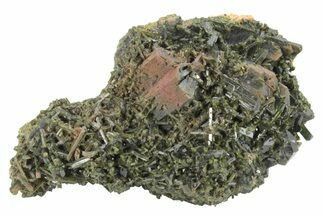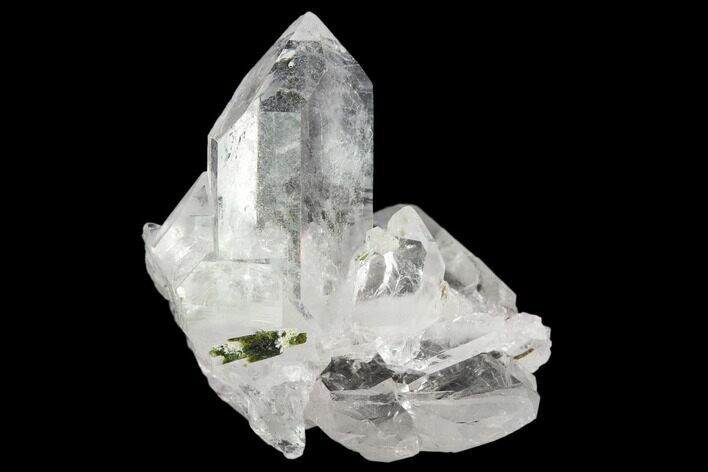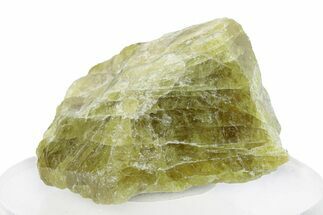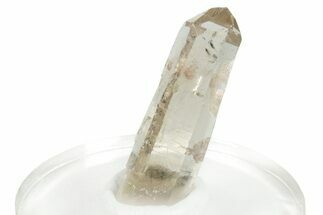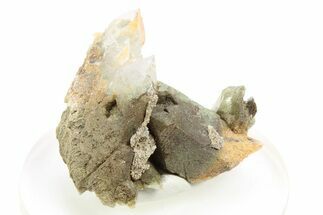This Specimen has been sold.
1.15" Faden Quartz Crystal Cluster with Epidote - Pakistan
This amazing faden quartz crystal cluster contains liquid and gas scars throughout the specimen, leaving the quartz with thread like inclusions. This multi-terminated quartz is fairly transparent and the terminations are in great condition. Small amounts of green epidote can be on this specimen.
Faden quartz is typically found in mountainous regions. Quetta and Northern Pakistan produce the most well-known deposits of these beautiful specimens. These quartz formations occurs between cracks in a host rock. The cracks in the rock expand with the crystals, occasionally causing ruptures within the crystal from pressure. This causes the healing process to begin, giving rise to the branching of parallel faden quartz crystals seen in the majority of our listed specimens.
About Epidote
Epidote is a striking and often green mineral known for its complex crystal structure and vitreous luster. It is a calcium aluminum iron silicate that commonly forms in metamorphic rocks, particularly in regions that have undergone low to medium-grade metamorphism. The color of epidote typically ranges from pistachio green to dark green, although it can occasionally appear yellowish-green or even brown due to varying iron content.
Epidote crystals can appear in prismatic, slender forms or as aggregates, and they often exhibit striations along their length. The mineral’s translucent to transparent appearance and high refractive index give it an attractive, glassy shine.
It is commonly associated with minerals such as quartz, feldspar, and garnet, often forming in metamorphic rocks like schist and gneiss. It can also be found in skarn deposits alongside minerals like calcite, diopside, and amphiboles. These associations can provide insights into the geologic history and metamorphic conditions of the region. Epidote is found in locations worldwide, with notable sources including Austria, Norway, Pakistan, and parts of the United States. Collectors prize epidote for its unique green hues and well-formed crystal clusters.
Epidote is a striking and often green mineral known for its complex crystal structure and vitreous luster. It is a calcium aluminum iron silicate that commonly forms in metamorphic rocks, particularly in regions that have undergone low to medium-grade metamorphism. The color of epidote typically ranges from pistachio green to dark green, although it can occasionally appear yellowish-green or even brown due to varying iron content.
Epidote crystals can appear in prismatic, slender forms or as aggregates, and they often exhibit striations along their length. The mineral’s translucent to transparent appearance and high refractive index give it an attractive, glassy shine.
It is commonly associated with minerals such as quartz, feldspar, and garnet, often forming in metamorphic rocks like schist and gneiss. It can also be found in skarn deposits alongside minerals like calcite, diopside, and amphiboles. These associations can provide insights into the geologic history and metamorphic conditions of the region. Epidote is found in locations worldwide, with notable sources including Austria, Norway, Pakistan, and parts of the United States. Collectors prize epidote for its unique green hues and well-formed crystal clusters.
SPECIES
Quartz & Epidote
LOCATION
Pakistan
SIZE
1.15 x .9"
CATEGORY
SUB CATEGORY
ITEM
#127429
 Reviews
Reviews
